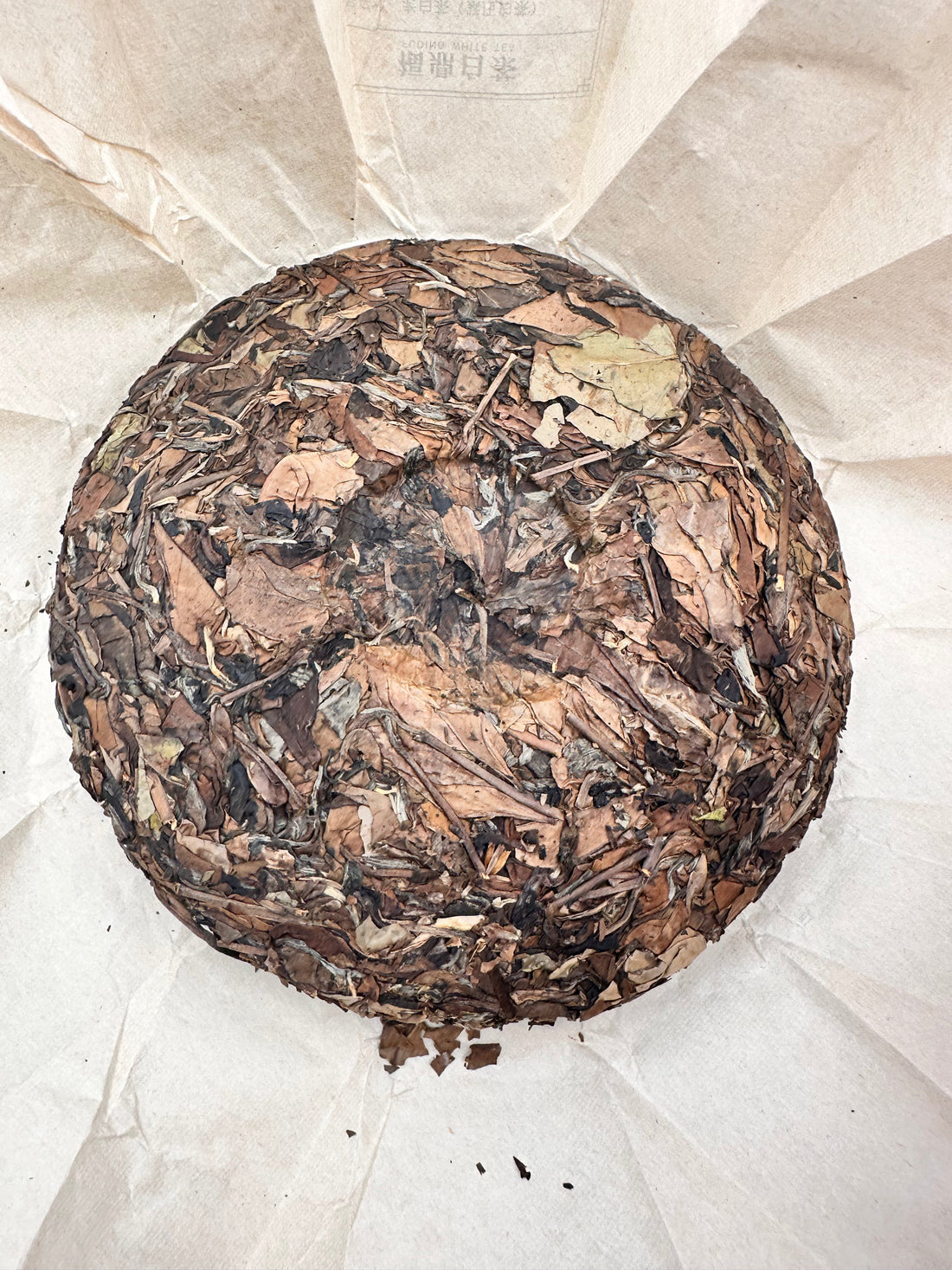
Exploring the World of White Tea: Gongmei, Shoumei, Aged White Tea, and Wild Peony from Fuding and Zhenghe
Share
White tea, cherished for its delicate flavors and minimal processing, is a gem of Chinese tea culture, with Fuding and Zhenghe in Fujian as its primary origins. Known for its subtle taste and health benefits, white tea includes Gongmei, Shoumei, Aged White Tea, Baihao Yinzhen (Silver Needle), Bai Mudan (White Peony), and Wild Peony (Huangye Mudan). Each variety, defined by unique materials, production, and terroir, offers a distinct experience. This blog delves into these teas, comparing them with Wild Peony to showcase white tea’s diversity.
Production of White Tea
White tea’s charm lies in its simplicity. Harvested from Camellia sinensis—typically Fuding Da Bai or Da Hao cultivars—buds and leaves undergo minimal handling. After hand-picking, they are withered under sunlight or indoors, naturally drying to concentrate flavors. Low-heat drying follows, preserving freshness without rolling or oxidation, unlike green or black teas. Fuding’s coastal breezes lend a crisp edge to withering; Zhenghe’s inland climate adds depth. Aged White Tea, often pressed into cakes, matures in dry, ventilated storage, evolving over years. Wild Peony’s production relies on slower, natural withering due to its untamed environment, enhancing its unique profile.
Gongmei: The Refined Tribute

Materials: Gongmei (“Tribute Eyebrow”) uses one bud and one or two tender leaves, picked in late spring from Da Bai or Da Hao. Fuding’s is delicate; Zhenghe’s is fuller.
Production: After withering and drying, Fuding Gongmei is often compressed into cakes for aging; Zhenghe leans toward loose tea.
Flavor: Fuding Gongmei offers floral, honey-sweet notes with apricot hints; Zhenghe’s is nuttier, with a creamy finish. Aged, it becomes smooth and earthy. Compared to Baihao Yinzhen’s purity, Bai Mudan’s vibrancy, or Wild Peony’s ruggedness, Gongmei balances finesse and substance.
Shoumei: The Robust Classic

Materials: Shoumei (“Longevity Eyebrow”) uses coarser, mature leaves with few buds, harvested late. Fuding’s leaves are thick; Zhenghe’s are broader, from Da Bai bushes.
Production: Like Gongmei, it’s withered and dried. Fuding’s clarity shines; Zhenghe’s adds heft. Cakes age well.
Flavor: Fuding Shoumei is sweet with hay-like tones, slightly astringent; Zhenghe’s is woody, with a bold aftertaste. Aged Shoumei softens, gaining nutty warmth. It’s rustic against Gongmei’s elegance, Baihao Yinzhen’s finesse, Bai Mudan’s brightness, or Wild Peony’s wild charm.
Aged White Tea: The Mellow Treasure

Materials: Often Gongmei or Shoumei, using Da Bai or Da Hao buds and leaves. Fuding’s cakes are refined; Zhenghe’s are hearty.
Production: Post-processing, teas age in dry spaces. Fuding’s humidity boosts sweetness; Zhenghe’s cooler climate adds complexity.
Flavor: Fuding Aged White Tea yields golden, honeyed brews with floral depth; Zhenghe’s offers woody, medicinal notes. Both outshine young teas in smoothness, surpassing Baihao Yinzhen’s clarity, Bai Mudan’s youth, or Wild Peony’s intensity with matured richness.
Wild Peony: Nature’s Jewel
Materials: Wild Peony, akin to Bai Mudan, uses one bud and two leaves from wild or semi-wild trees in Fuding or Zhenghe’s mountains, thriving without cultivation.
Production: Its slow withering, driven by natural conditions, and gentle drying preserve raw character.
Flavor: Fuding Wild Peony blends herbal and wildflower notes, sweet with a bitter edge; Zhenghe’s is fruitier, with pine-like hints. Unlike Bai Mudan’s cultivated freshness, it’s untamed, distinct from Gongmei’s refinement, Shoumei’s earthiness, or Aged White Tea’s depth.
Comparing with Baihao Yinzhen and Bai Mudan
-
Baihao Yinzhen (Silver Needle): Made from downy buds, it’s white tea’s apex. Fuding’s is ethereal, floral; Zhenghe’s is bolder. Rarely aged, it’s pricier and purer than Gongmei, Shoumei, or Wild Peony.
-
Bai Mudan (White Peony): One bud and two leaves; Fuding’s is grassy, peachy; Zhenghe’s is fruitier. Less suited for aging than Shoumei, it’s fresher than Gongmei but tamer than Wild Peony’s ruggedness.
-
Wild Peony: Its wild origins yield intense herbal-fruit notes, outshining Bai Mudan’s polish, Baihao Yinzhen’s delicacy, Gongmei’s balance, or Shoumei’s heft with raw, natural vigor.
-
White Tea Category: All share minimal processing and antioxidants. Gongmei and Shoumei excel in aging; Baihao Yinzhen seeks freshness; Bai Mudan offers youth; Wild Peony embodies nature. Fuding teas are airy; Zhenghe’s are robust.
From Fuding’s coastal grace to Zhenghe’s rugged depth, Gongmei, Shoumei, Aged White Tea, and Wild Peony reveal white tea’s spectrum. Discover these at hanakichi.store for a taste of tradition and terroir.




